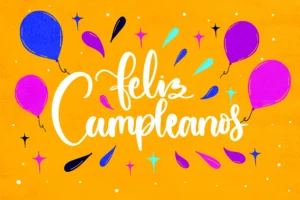Cramming Spanish vocabulary from textbook lists rarely sticks beyond your next quiz. Meanwhile, Spanish-speaking communities worldwide celebrate vibrant festivals that teach authentic language through music, food, traditions, and genuine cultural experiences.
Spanish festival learning transforms abstract vocabulary into meaningful cultural knowledge. When you understand why Spanish speakers celebrate La Tomatina or Día de los Muertos, you naturally absorb essential vocabulary, grammar structures, and cultural context that textbooks simply cannot provide.
At Explore! Spanish Language Tutors in Cary, NC, we integrate cultural celebrations into our teaching methodology because festivals showcase how Spanish speakers actually use their language in real-world contexts. You can reach us at 1-919-877-6832 to learn more about our cultural approach. For instance, understanding common Spanish greetings and expressions used in daily conversations helps students grasp cultural etiquette before exploring deeper traditions through festivals. This article explores how major Spanish festivals teach essential vocabulary, improve cultural fluency, and accelerate your journey toward Spanish mastery.
Why Spanish Festival Learning Works Better Than Textbooks
Spanish festival vocabulary creates emotional connections that traditional classroom methods often miss. When you learn the word “celebración” while watching videos of actual Spanish celebrations, your brain forms stronger neural pathways than simply reading definitions from a vocabulary list.
Cultural context gives meaning to language structures in ways that grammar exercises cannot match. Spanish festivals demonstrate how verb tenses, descriptive adjectives, and conversational phrases function in authentic situations. You hear native speakers using past tense naturally when they describe festival traditions, present tense when they explain current activities, and future tense when they discuss upcoming celebrations.
Multi-sensory learning through festival exploration engages visual, auditory, and kinesthetic learning styles simultaneously. Spanish festival music helps with pronunciation and rhythm. Traditional festival foods introduce vocabulary through taste and smell associations. Colorful festival imagery creates visual memories that support vocabulary retention.
Regional differences become clear through festival comparisons across Spanish-speaking countries. The same celebration might use different vocabulary, customs, or expressions depending on whether it occurs in Spain, Mexico, or Argentina. This exposure helps learners understand that Spanish varies by location while maintaining core grammatical structures.
The Science Behind Cultural Language Learning
Research shows that emotional engagement improves vocabulary retention by up to 40% compared to neutral learning contexts. Spanish festivals naturally create positive emotional experiences that enhance memory formation and recall abilities.
Immersive cultural learning activates multiple brain regions simultaneously, creating redundant memory pathways that improve long-term retention. When you associate Spanish words with festival contexts, you build stronger connections than isolated vocabulary study provides.
Major Spanish Festival Celebrations That Teach Essential Vocabulary
Spanish festivals offer concentrated vocabulary lessons within authentic cultural frameworks. Each celebration introduces specific word categories while demonstrating natural language usage patterns.
La Tomatina: Action Vocabulary and Community Spirit
La Tomatina takes place annually in Valencia, Spain, where thousands of participants throw ripe tomatoes in the streets during a massive food fight celebration. This Spanish festival teaches action vocabulary through dynamic, memorable contexts.
Essential La Tomatina vocabulary includes “lanzar” (to throw), “tomate” (tomato), “multitud” (crowd), “celebración” (celebration), “divertirse” (to have fun), and “tradicional” (traditional). Action verbs become memorable when you watch festival participants actually performing these activities rather than simply reading verb conjugations.
Grammar concepts emerge naturally through La Tomatina descriptions. Present progressive tense appears frequently as people describe ongoing festival activities. Descriptive adjectives help explain the messy, colorful, and chaotic nature of the celebration. Reflexive verbs demonstrate how participants prepare themselves and clean up afterward.
Cultural lessons about Spanish community spirit become apparent through La Tomatina participation. The festival demonstrates how Spanish speakers value collective celebration, shared experiences, and community bonding through playful activities.
Día de los Muertos: Family Vocabulary and Cultural Values
Día de los Muertos represents one of Mexico’s most significant cultural celebrations, honoring deceased family members through elaborate altars, special foods, and cemetery visits. This Spanish festival teaches family vocabulary while demonstrating Mexican cultural values around death, memory, and continuity.
Key Día de los Muertos vocabulary includes “altar” (altar), “recuerdos” (memories), “antepasados” (ancestors), “caléndulas” (marigolds), “ofrenda” (offering), “familia” (family), and “tradición” (tradition). These words carry deep cultural significance that helps learners understand Mexican perspectives on family relationships and spiritual beliefs.
Cultural phrases related to remembrance and family connections appear throughout Día de los Muertos celebrations. Expressions like “recordar a los seres queridos” (remembering loved ones) and “honrar la memoria” (honoring memory) provide authentic conversational models for discussing family and emotions.
Grammar focus areas include past tense usage when describing deceased relatives, possessive adjectives when talking about family relationships, and subjunctive mood when expressing hopes or wishes for departed loved ones.
Semana Santa: Religious Vocabulary and Formal Language
Semana Santa occurs throughout the Spanish-speaking world as communities observe Holy Week through religious processions, traditional ceremonies, and family gatherings. This Spanish festival introduces religious vocabulary while demonstrating formal language registers used during important cultural events.
Important Semana Santa vocabulary includes “procesión” (procession), “tradición” (tradition), “fe” (faith), “comunidad” (community), “religioso” (religious), “ceremonia” (ceremony), and “sagrado” (sacred). These words appear in formal contexts that help learners understand appropriate language levels for serious cultural events.
Regional variations become apparent through different Semana Santa celebrations across Spanish-speaking countries. Spanish processions differ from Mexican or Guatemalan observances, introducing learners to vocabulary variations and cultural adaptations while maintaining core religious concepts.
Formal language usage during religious events demonstrates how Spanish speakers adjust their communication style based on context. Semana Santa provides examples of respectful, ceremonial language that contrasts with casual conversation patterns.
How to Use Spanish Festival Learning in Your Studies
Spanish festival vocabulary study works best when you actively engage with festival content rather than passively reading about celebrations. Create themed vocabulary lists organized around specific festivals, then practice using these words in context through speaking and writing exercises.
Watch Spanish festival videos with Spanish subtitles to hear authentic pronunciation while reading correct spelling simultaneously. YouTube offers extensive festival coverage from Spanish-speaking countries that provides current vocabulary usage and cultural context. Start with shorter videos and gradually increase complexity as your comprehension improves.
Cook traditional festival foods while learning ingredient names and cooking vocabulary in Spanish. Preparing “pan de muerto” for Día de los Muertos or “paella” for Las Fallas teaches kitchen vocabulary through hands-on experience. Food preparation vocabulary transfers to restaurant situations and grocery shopping contexts.
Role-play festival scenarios with conversation partners or tutors to practice vocabulary in realistic contexts. Pretend to attend La Tomatina, describe Día de los Muertos altars, or explain Semana Santa traditions to practice using festival vocabulary in conversational settings.
Practical Festival Learning Activities
Virtual festival participation allows you to experience celebrations from your home while building vocabulary and cultural knowledge. Many Spanish festivals now offer online experiences, virtual tours, and interactive cultural activities that provide authentic learning opportunities.
Create your own festival celebration at home using Spanish language exclusively. Prepare traditional foods, play festival music, and describe activities in Spanish to reinforce vocabulary through immersive practice.
Use festival themes for conversation practice with other Spanish learners or native speakers. Discussing festival experiences, comparing celebrations across countries, or sharing cultural observations provides natural conversation topics that incorporate festival vocabulary organically.
Beyond Vocabulary: Cultural Fluency Through Spanish Festival Learning
Spanish festival knowledge builds cultural fluency that extends far beyond vocabulary acquisition. Understanding cultural celebrations helps you recognize social customs, appropriate responses, and communication patterns that textbooks rarely address adequately.
Non-verbal communication and cultural gestures become apparent through festival observation. Spanish festivals demonstrate how body language, facial expressions, and physical interactions vary across cultures and contexts. This knowledge improves your ability to communicate naturally with Spanish speakers.
Regional differences within Spanish-speaking countries become clear through festival comparisons. Mexican Día de los Muertos differs significantly from Bolivian celebrations honoring the dead, teaching learners that cultural practices vary even when using similar vocabulary and concepts.
Cultural sensitivity develops naturally through respectful festival learning. Understanding the significance behind celebrations helps you engage appropriately with Spanish-speaking communities and avoid cultural misunderstandings that could hinder communication progress.
Building confidence for real-world interactions occurs when you can discuss cultural topics knowledgeably. Spanish speakers appreciate when learners show genuine interest in their cultural traditions, creating opportunities for deeper conversations and authentic cultural exchange.
Transform Your Spanish Learning Through Cultural Celebration
Spanish festival vocabulary learning creates lasting connections between language and culture that accelerate fluency development while building genuine appreciation for Spanish-speaking communities worldwide. This approach transforms abstract vocabulary into meaningful cultural knowledge that serves you throughout your language learning journey.
Cultural immersion through festival study provides authentic contexts that help you understand how Spanish speakers actually use their language in real situations. At Explore! Spanish Language Tutors, we integrate these cultural approaches into our personalized teaching methodology because we believe language learning succeeds best when students connect emotionally with the cultures they’re studying.
Ready to explore Spanish culture while building your vocabulary? Contact us at 1-919-877-6832 to learn how we incorporate festival learning and cultural exploration into our Spanish tutoring programs. Your journey toward Spanish fluency becomes more engaging and effective when you discover the rich cultural traditions that give meaning to the language you’re learning.




